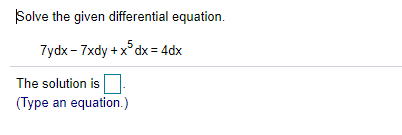Answered step by step
Verified Expert Solution
Question
1 Approved Answer
1. |Solve the given differential equation. 7ydx - 7xdy + x dx =4dx The solution is (Type an equation.)Find the particular solution to the given
1.






Step by Step Solution
There are 3 Steps involved in it
Step: 1

Get Instant Access to Expert-Tailored Solutions
See step-by-step solutions with expert insights and AI powered tools for academic success
Step: 2

Step: 3

Ace Your Homework with AI
Get the answers you need in no time with our AI-driven, step-by-step assistance
Get Started


